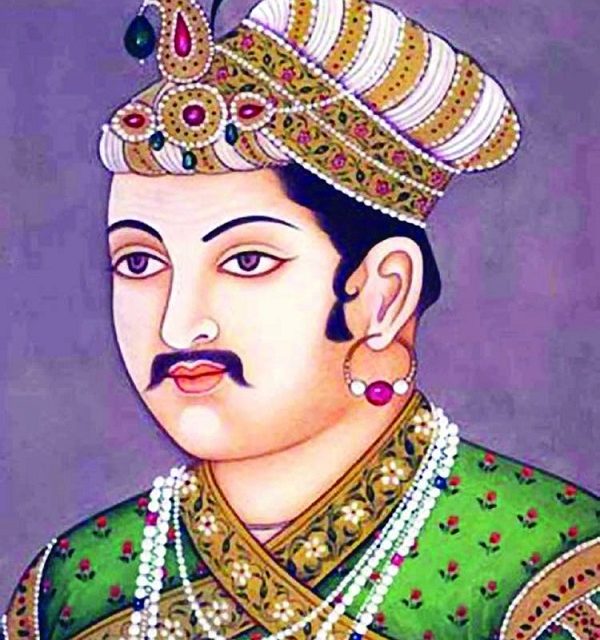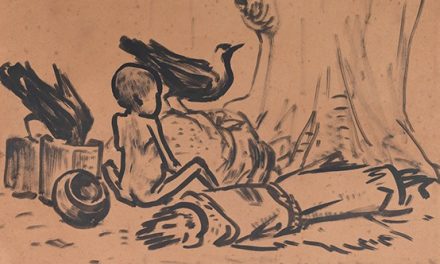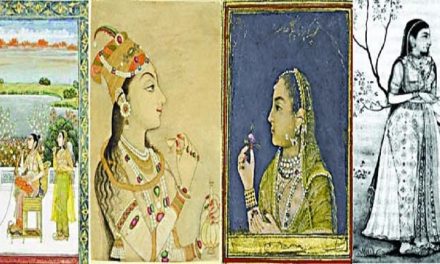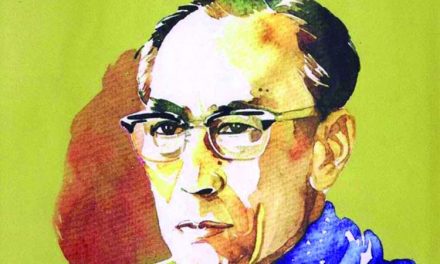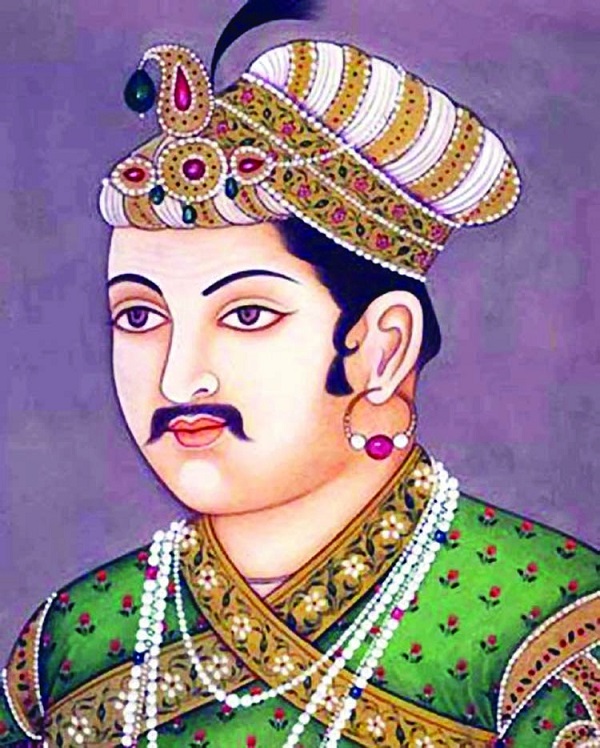
When the word “empire” comes into our minds, there are not many we can think of without eventually coming to the Mughal Empire. Thought to be the greatest empire of all time, The Mughal Empire stretched from the outer fringes of the Indus basin in the west, northern Afghanistan in the northwest, and Kashmir in the north, to the highlands of present-day Assam and Bangladesh in the east, and the uplands of the Deccan plateau in South India.
Despite the nineteen emperors who ruled this kingdom, there is one name which echoes through their history and that is of Emperor Akbar The Great.
Jalaluddin Muhammad Akbar was born in 1542 at the Umerkot fort in Sind to Emperor Humayun and his wife Hamida Banu Begum. As an emperor in exile after defeat at the Battle of Kanauj, Humayun was forced to raise his son at the household of his brother Kamran Mirza and Aksari Mirza in Afghanistan. Growing up he learnt to hunt and fight using various weapons, shaping himself to eventually become the greatest emperor of India.
In 1555, Humayun recaptured Delhi with the military support of Shah Tahmasp I. Unfortunately, Humayun soon passed away after an accident and the weight of his empire came upon the shoulders of his son Akbar at the tender age of thirteen.
Akbar succeeded Humayun on February 14th, 1556 in Kalanaur (Punjab) and was proclaimed ‘Shahanshah’. Humayun’s trusted general Bairam Khan assumed the post of Regent for Akbar and ruled on behalf of the young Emperor till he came of age. Bairam Khan had been Akbar’s childhood guardian and he was known for his excellence as a warrior and statesman.
Celebrations of Akbar’s ascent to power were short-lived as soon afterwards his kingdom was attacked by the Afghan Sultan Mohammad Adil Shah of Chunar. At the time the young emperor’s empire consisted of Kabul, Kandahar, Delhi and parts of Punjab.
The Mughals were handed a humiliating defeat, losing both Agra and Delhi to Adil Shah’s Hindu general Samrat Hem Chandra Vikramaditya or Hemu in short. Hemu ascended the throne on October 7, 1556, and established Hindu rule in North India after 350 years of Muslim Imperialism.
Akbar on the instructions of Bairam Khan soon declared intentions to reclaim his throne at Delhi. The Mughal army moved to Panipat through Thaneshwar and faced Hemu’s army on November 5, 1556. Akbar’s army in contrast with Hemu’s was meagre in every way.
The opposition consisted of 30,000 horsemen and 1500 war elephants and had the support of native Hindu and Afghan rulers who considered the Mughals as outsiders. Bairam Khan was a mastermind at tactics and knew exactly how to overcome the opposition.
He led the attack from the rear and placed his best generals on the front left and right flanks. Hemu’s army was still overpowering the Mughals and at one point it looked like Akbar’s side would falter. However, a sharp change of attack left Hemu’s army confused which gave Bairam Khan and his General Quli Khan the opening they needed to conquer the enemy.
Hemu himself was shot with an arrow through his eyes while riding his elephant through battle. All efforts to flee were prevented and the Hindu general was captured and brought to Akbar for execution. The Second battle of Panipat marked the beginning of the glory days for the Mughal reign in India. Akbar was determined to end Afghan sovereignties that might be claimant for his throne. Hemu’s relatives were captured and imprisoned by Bairam Khan.
Sher Shah’s successor, Sikander Shah Sur was driven out from North India to Bihar and was subsequently forced to surrender in 1557. Soon after, Muhammad Adil, an Afghan contender to the throne was killed the same year. Any and every other enemy was compelled to flee Delhi and neighbouring regions to seek refuge in other states.
Akbar was born to be a leader. He had his own dreams and ambitions for his empire, ones where he was its sole leader and not just a figurehead for someone else’s plans. When the young emperor turned eighteen, he dismissed the increasingly dominating Bairam Khan and took full control of his kingdom.
The sullen ex regent was ordered to sail to Mecca for Hajj to get him out of the picture. However, angry at his removal from power, Bairam Khan soon started a rebellion against his king. He was consequently defeated by Akbar’s army in Punjab. Akbar mercifully spared his old guardian from execution and once again sent the fallen general for Hajj.
The first decade of Akbar’s rule was pledged towards expanding his empire. Bairam Khan had previously annexed Ajmer, Malwa and Garha Katanga into the Mughal territories. Akbar soon captured Lahore and Multan, major centres of Punjab. Ajmer opened the doors to Rajputana. He also claimed the Gwalior fort from the Sur Rulers. He conquered Gondwana in 1564 from the minor ruler Raja Vir Narayan.
Akbar’s forces met a daunting opponent in the form of the young King’s mother, Rani Durgavati. On being defeated the Rajput queen committed suicide while Vir Narayan was slain during the capture of Chauragarh fortress.
Having established his supremacy over most of north and central India, Akbar turned his attention towards the biggest threat to his supremacy- Rajputana. He had already established his rule over Ajmer and Nagor. In 1561, Akbar started his quest to conquer Rajputana. He employed force as well as shrewd diplomacy to make the Rajput rulers submit to his rule. Most accepted his sovereignty except the Sisodia ruler of Mewar, Udai Singh.
This presented a problem for Akbar and his intentions to establish unquestioned and unfaltering supremacy over the region. In 1567, Akbar attacked the Chittorgarh fort in Mewar, a key strategic point for establishing rule in Rajputana. Udai Singh’s chiefs Jaimal and Patta showed resilience and held on to their territory for four months. In the end, their efforts fell to dust in front of the mighty emperor.
Udai Singh was banished to the Hills of Mewar. Other Rajput states soon started falling to Mughal forces, but Rana Prapat, Udai Singh’s son, put up a formidable resistance to Akbar’s expansion of power. He was the last of the Rajput rulers and fought till his heroic end in the Battle of Haldighati in 1576.
Following his victory over the Rajputana, Akbar brought into his empire Gujarat in 1584, Kabul in 1585, Kashmir in 1587, Sindh in 1591 and Bengal in 1592. In 1593, Akbar set out on his conquest to capture Deccan territories. He faced opposition in Ahmednagar and attacked the Deccan state in 1595. Akbar’s forces met a formidable match in the form of the regent queen Chand Bibi, but she too was forced to concede defeat and give up Berar. By 1600, Akbar had captured Burhanpur, Asirgarh Fort, Kandahar and Khandesh.
As excellent Akbar was at conquering, he was even better at ruling the rewards of his conquests. In order to control his vast empire, Akbar established a highly efficient bureaucratic system. He appointed military governors throughout various regions to maintain law and order, who would answer directly to him. As a result, he was able to merge the individual fiefdoms of India into a unified empire. Akbar revised his tax system and separated revenue collection from military administration.
A separate tax collector would collect property taxes and send them to the capital. Since the individuals with the money had no troops, and the troops had no money, all were dependent on the central government. The central government paid fixed salaries to both military and civilian personnel according to their ranks.
Akbar was also the first Islamic ruler in India who secured political alliances through matrimony. He married several Hindu princesses including Jodha Bai, from the house of Jaipur, HeerKunwari from the house of Amber, and princesses from the houses of Jaisalmer and Bikaner. He further strengthened the alliance by inviting male relatives of his wives to his court and honoring them with important roles in his administration. These alliances were crucial in securing the loyalty of these dynasties. This practice brought the Hindu and Muslim nobilities even closer and established a secular environment in the empire.
In a time of Islamic dominance in the Mughal empire, Akbar was a fresh breeze of secularism and religious freedom. Akbar had always been a patron of religious independence. He had abolished pilgrimage taxes on Hindus and removed the yearly tax that was imposed on non-Muslims. Akbar had always been religiously curious. He opened an academy called the Ibadat Khana or “the House of Worship,” in 1575, where representatives of all major faiths could come together to discuss questions of theology.
Listening to these debates, Akbar came to the realization that the perfect religion wasn’t a specific religion, but a combination of many. His idea was to combine Islam and Hinduism into one faith, and also to add aspects of Christianity, Zoroastrianism and Jainism. Thus, came into existence Din-iIlahi “The Religion of God ”. It focussed on morality, piety and kindness.
However, Akbar’s new religion never picked up the pace or popularity he had envisioned for it. It had no scriptures, priests, and in reality, it did not have many followers either; Other than members of Akbar’s closest circle of advisers. Din-e Ilahi is best viewed as a state religion with the emperor at its centre. As the sole authority on all religious matters, Akbar would not only explicate and apply the religious law, but literally fabricate it as well. In the end, the new faith had more to do with politics than with religion.
As a child Akbar had never learned how to read or write. The mighty emperor would blow it off as a minor handicap and appoint followers to read to him all spectrums of religious texts, poetry, art, politics and history. As an admirer of open-minded thinking, debate and dialogue Akbar offered his patronage to several extraordinary talents from all across his empire. Together these individuals were referred to as the Nava Ratnas or the Nine Gems.
They were Abul Fazel, Faizi, MianTansen, Birbal, Raja Todar Mal, Raja Man Singh, Abdul Rahim Khan-I-Khana , Fakir Aziao-Din and Mullah Do Piaza. They were artists, musicians, writers, finance ministers, warriors, and poets, and all came from unique religious and cultural backgrounds As a devoted patron of art Akbar commissioned the work of multiple Mughal wonders which are a sight to behold even today.
He is known for ushering in the Mughal style of architecture, which incorporated essences of Islamic, Persian and Hindu design. The building of several forts and mausoleums were authorized during his reign including the Agra Fort, the town of Fatehpur Sikri with its beautiful Jami Masjid and BulandDarwaza, Humayun’s Tomb, Ajmer Fort, Lahore Fort and Allahabad Fort.
In 1605 Akbar fell ill with a serious case of dysentery at the age of 63. After three weeks of suffering, he passed away on October 26, 1605, at Fatehpur Sikri. His physician tried every remedy, but nothing did any good.
Five days before his death, a group of Jesuits visited the Emperor. This allegedly raised his spirits but did little to improve his physical health. Only a few friends and attendants were allowed in the dying ruler’s bedchamber during his last moments. They urged him to speak the name of the One True God and he seemed to try, but could not utter a sound.
At around midnight death took him away. The emperor was buried in a beautiful mausoleum in the royal city of Agra Akbar is without a doubt the greatest Mughal Emperor of all time. His legacy of firm but fair central control, religious tolerance, and liberal tax policies that gave commoners a chance to prosper are exemplary even today. Most of all, Akbar’s rule reflected that tolerance is not a weakness and that open-mindedness is not the same as indecisiveness.

